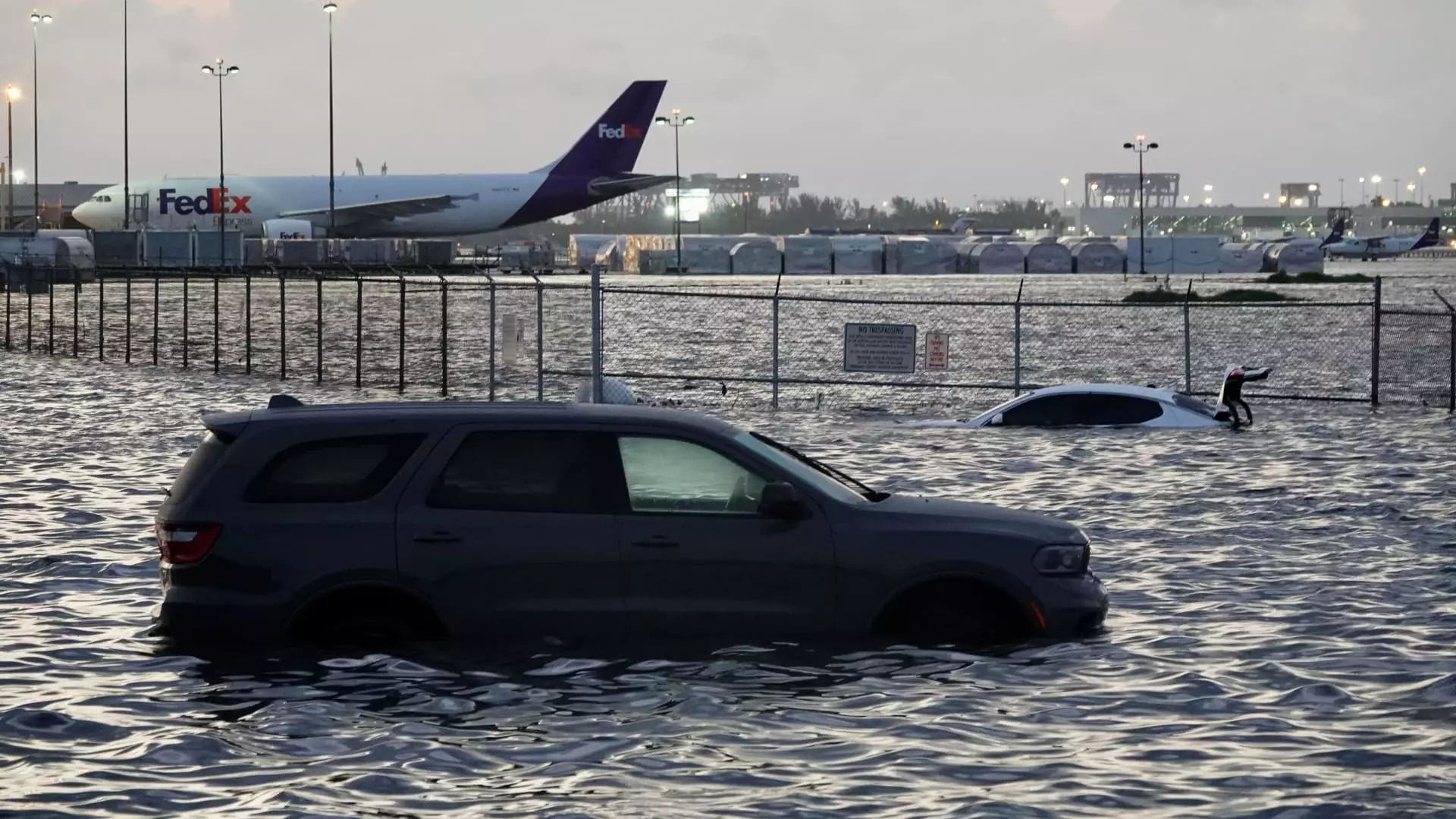The United States, often seen as a global superpower, is teetering on the edge of an infrastructure crisis that threatens the nation’s economic stability and national security. Despite decades of investment, the backbone of American progress—its roads, bridges, airports, and power grids—stands unprepared for the relentless assault of climate change. The reality is stark: our infrastructure is aging, underfunded, and increasingly vulnerable to the new normal of extreme weather events. From flooded runways in Florida to bridges stuck open in New York, the signs of systemic failure are now undeniable. Yet, in many corridors of power, complacency persists, hindering the urgent reforms this crisis demands.
Climate Change: A Catalyst for Catastrophe
No longer theoretical, climate change manifests in tangible, destructive ways across the U.S. Nearly every sector of infrastructure suffers its effects, often in devastating fashion. The American Society of Civil Engineers (ASCE) has issued a sobering report card that assigns the nation a “C”—a passing grade, but one that surely masks peril. They highlight that infrastructure was designed under assumptions of a climate that no longer exists—a version of weather calm and predictable. Today, we confront floods that turn runways into rivers, heat that warps and weakens critical steel structures, and wildfires that threaten power and communication lines. These extreme weather events, once rare, are now routine, exposing the glaring flaws in our planning and construction paradigms.
What makes this situation even more perilous is the staggering magnitude of our investments— or the lack thereof. ASCE estimates a gargantuan $3.7 trillion investment gap over the coming decade. That’s not just money; it’s about safeguarding the future of millions of Americans who rely on reliable transportation, energy, and communication services. The problem is compounded by the fact that much infrastructure predates modern climate realities; bridges constructed in the mid-20th century are ill-equipped to handle the heat and moisture assaults they now face. This disconnect between design and reality signifies a systemic risk that could cascade into broader economic and social upheaval.
Financial and Political Barriers to Resilience
Addressing this crisis isn’t just a technical challenge—it’s a political and economic one. Increasingly, climate resilience is becoming central to financial decision-making. Major investors are probing how climate risks influence infrastructure projects, insurance, and asset valuations. As Sarah Kapnick points out, the question isn’t whether we should invest more in resilient infrastructure but how. Yet, federal investment remains inadequate and inconsistent. Seemingly deliberate cuts to federal programs—like FEMA’s decision to cancel nearly a billion dollars allocated for disaster mitigation—represent a shortsighted approach driven by political ideology rather than pragmatic necessity.
Adding to the complexity are unprecedented attacks on science itself. The Trump administration’s budget cuts to NOAA, FEMA, and NIST have compromised our scientific capacity to accurately assess and plan for future threats. This ideological stance, dismissing climate science, leaves policymakers and engineers working with outdated or incomplete data. Without reliable science, efforts to modernize or strengthen infrastructure are akin to building on shifting sands—destined to fail.
Furthermore, the lack of sustained federal leadership hampers private sector involvement. While some firms like JPMorgan Chase are pushing to integrate climate risk into their strategies, their actions are limited without consistent regulatory guidance and funding. This regulatory vacuum discourages proactive investments and innovations that could prepare us for the climate challenges ahead.
The Urgency of a Leadership-Driven Reform
At this juncture, the United States faces a choice: ignore the mounting evidence and risk catastrophic failures or prioritize bold, strategic action. Resilience must become a non-negotiable component of infrastructure investments. That requires a fundamental shift in how policymakers view and tackle this issue—moving beyond mere patches and short-term fixes to comprehensive, science-backed reforms.
Implementing resilient infrastructure is not merely an expense; it is an investment in national security and economic stability. It demands consistent funding, political will, and an acknowledgment of climate science that is currently under attack from various ideological vantage points. Without decisive leadership, the gap between infrastructure needs and reality will only widen, fostering a brittle system liable to collapse under the weight of future disasters.
The path forward involves leveraging technological innovations, updating building codes, and ensuring that climate science remains integral to planning. Public-private partnerships should be fostered, bringing private capital into the effort of rebuilding a resilient infrastructure network. But above all, the development of a long-term, politically insulated strategy must be prioritized—one that recognizes the gravity of the climate-driven transformation our infrastructure must undergo.
This is a defining moment for the nation. The ability—and willingness—to act decisively now will determine whether America’s foundation remains strong or crumbles beneath the weight of neglect, political shortsightedness, and climate change.

